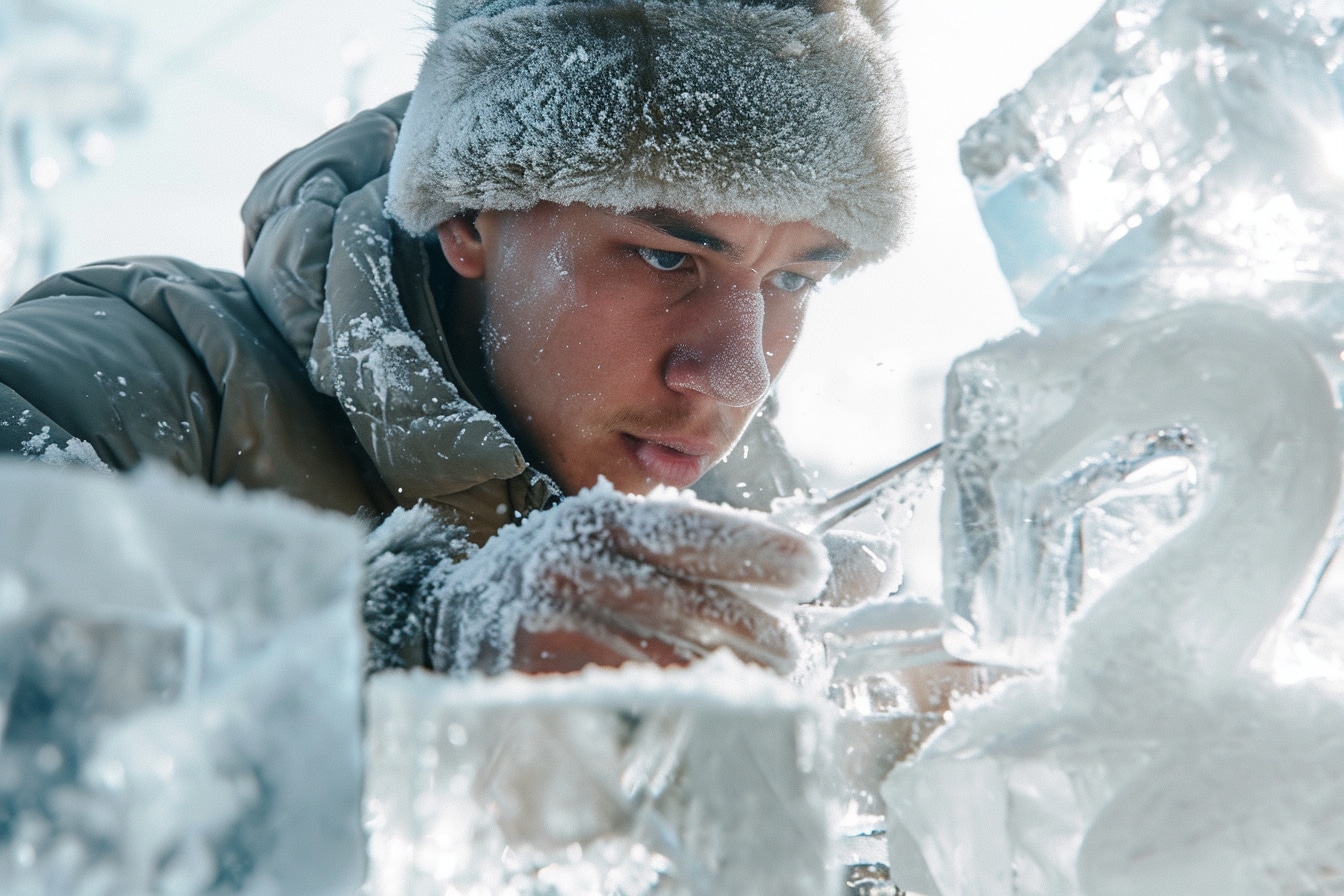Mastering the Art of Ice Sculpting: Essential Techniques and Beginner’s Guide

Ice sculpture is a fascinating art that transforms blocks of ice into ephemeral and captivating works of art. Working with ice requires precision and creativity, and proves to be an exciting activity for anyone looking to explore a unique art form. Whether you’re a budding artist or simply looking for a new hobby, here are the essential techniques and tips for getting started with ice sculpting.
Understanding the material
Ice, this translucent and malleable material, has specific characteristics that must be understood before diving into the world of sculpture. Professional ice carvers often use “pure” ice, that is, without air bubbles, because it is not only clearer, but also stronger. It is also crucial to consider the ambient temperature as ice melts quickly and can become brittle when exposed to warmer temperatures.
Selection of sculpting tools

Equipment is fundamental to success in ice sculpting. Here is a list of tools a beginner should consider:
- Ice saws : to cut large blocks of ice.
- Scissors and ice picks : for fine details and texture.
- Chisels or ice scissors : available in different sizes, to remove large parts and sculpt shapes.
- Electric irons : to smooth the surface of the ice.
- Insulating gloves : to protect your hands not only from the cold but also from injuries.
Become familiar with each tool and its specific use to work ice efficiently and safely.
Basic Ice Sculpting Techniques
Cutting and general shape
Before starting the sculpture, you must trace the design of your work on the ice using a water marker. Then, use a saw to cut out any large, unnecessary pieces of ice and begin to define the basic shape of your sculpture.
Details and finishing
Once the general shape is established, use the chisels to model more precise contours and bring your work to life. Finer tools like ice picks will be useful for carving minute details. Finally, the electric iron helps lightly melt the surface of the ice to achieve a smooth, clear finish.
assembly
For more complex sculptures requiring the assembly of several pieces, water or even snow is used to “glue” the elements together. Snow acts like a natural glue when pressed between two blocks of ice.
Tips for Beginners
Practice patience and caution : Ice sculpting requires patience, so give yourself time to master the techniques. Also be careful, as the tools are sharp and the ice can be unpredictable.
Pay special attention to light : The way light interacts with the ice changes the appearance of your sculpture. Explore different lighting to see how it highlights your work.
Experiment with textures : Feel free to experiment with the different tools to create a variety of textures on the ice and enrich the appearance of your work.
Participate in workshops : Ice sculpting workshops allow you to learn from professionals and are a great opportunity to receive constructive feedback.
Stay inspired and creative
Ice sculpture is a discipline where creativity has no limits. Take inspiration from nature, architecture, mythology or any other source that sparks your imagination. Don’t be afraid to be ambitious in your projects. Even the most experienced sculptors began with simple creations before progressing to more complex and detailed works.
Take care of your work environment
Your work environment should be well lit and cold enough to keep the ice from melting, but not so cold that it becomes uncomfortable for you. Also make sure your space is secure and the floor is protected, as ice sculpting can be a wet and slippery process.
Sculpt the ice, although difficult at first, is rewarding once you manage to tame this extraordinary material and create sculptures that captivate the eye and stimulate the imagination. With practice, determination, and a passion for the art, ice sculpting beginners can reach heights of creativity and perhaps one day create works that leave an indelible mark, even if they eventually return to the liquid state.
Comments
Leave a comment